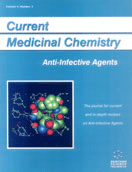Abstract
Food proteins have been considered till recently as substances that provide the organism with essential amino acids necessary for the maintenance of life. In more recent times it has been shown in a convincing manner that they are able to deliver the organism with several bioactive peptides including those possessing antiviral activity. A food protein, lactoferrin, has been shown to inhibit the human immunodeficiency virus, herpes simplex virus, human cytomegalovirus, poliovirus and rotavirus in vitro highlighting the importance of naturally occurring food proteins as possible antiviral agents. Of particular interest is that some food proteins, like α-lactalbumin or β-lactoglobulin, without antiviral activity can be modified, through easy chemical reactions, to acquire antiviral properties. One of the most successful modifications performed on the proteins, consists of chemically modifying the hydrophobic site and the positive charge of lysine and arginine residues of proteins by 3-hydroxyphthalic anhydride. The results reported until now suggest that multiple mechanisms are involved in the inhibition of the viral infection by the proteins investigated. Digestion of some proteins by proteolytic enzymes present in the gastrointestinal tract yields several peptide fragments possessing antiviral properties. Food proteins and their derivatives have the advantage, compared to synthetic pharmacologic compounds, to be non-toxic and surely well accepted by the consumers and thus have great potential for therapeutic application in the future.
Keywords: bioactive peptides, lactalbumin, antiviral activity, hemagglutinin, lysozyme
 9
9

